I modified Taryn's answer ("Pivot with unknown number of columnnames" version) to show more than 1 row in the result. This requires to have an additional "Group" column
DROP TABLE #yourtable
CREATE table #yourtable
([Id] int,[Group] int, [Value] varchar(6), [ColumnName] varchar(13))
;
INSERT INTO #yourtable
([Id],[Group], [Value], [ColumnName])
VALUES
(1,1, 'John', 'FirstName'),
(2,1, '2.4', 'Amount'),
(3,1, 'ZH1E4A', 'PostalCode'),
(4,1, 'Fork', 'LastName'),
(5,1, '857685', 'AccountNumber'),
(6,2, 'Pedro', 'FirstName'),
(7,2, '5.1', 'Amount'),
(8,2, '123456', 'PostalCode'),
(9,2, 'Torres', 'LastName'),
(10,2, '857686', 'AccountNumber')
;
;
DECLARE @cols AS NVARCHAR(MAX),
@query AS NVARCHAR(MAX)
select @cols = STUFF((SELECT ',' + QUOTENAME(ColumnName)
from #yourtable
group by [Group], ColumnName, id
having [group] = (SELECT TOP 1 MIN([Group])FROM #yourtable)
order by id
FOR XML PATH(''), TYPE
).value('.', 'NVARCHAR(MAX)')
,1,1,'')
set @query = N'SELECT ' + @cols + N' from
(
select value, ColumnName,[Group]
from #yourtable
GROUP BY [Group],ColumnName,Value
) x
pivot
(
max(value)
for ColumnName in (' + @cols + N')
) p '
exec sp_executesql @query;

